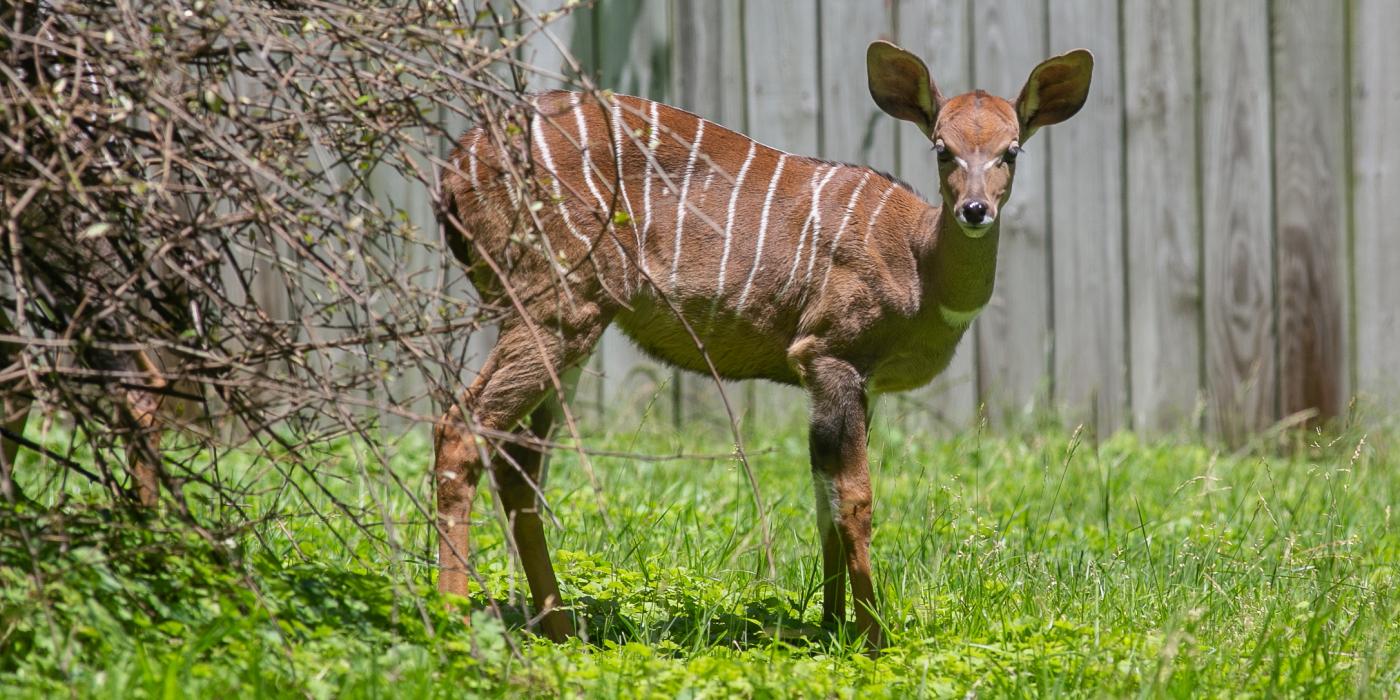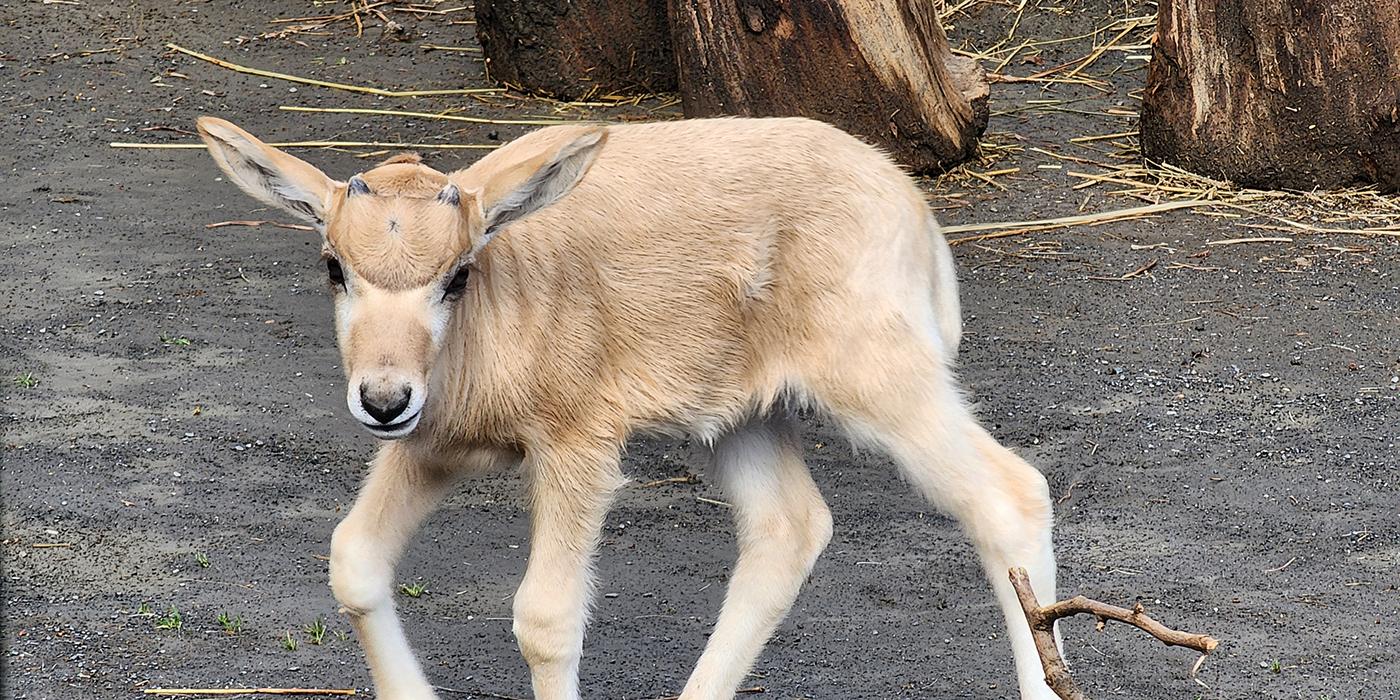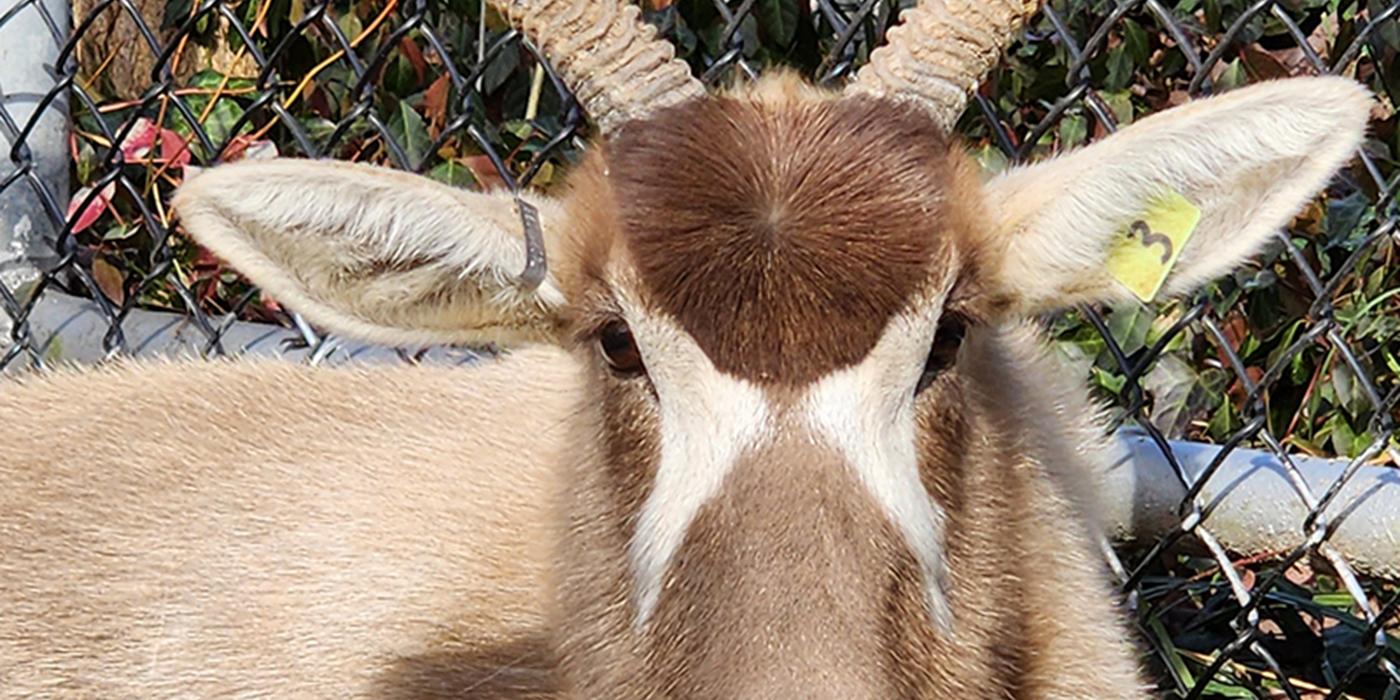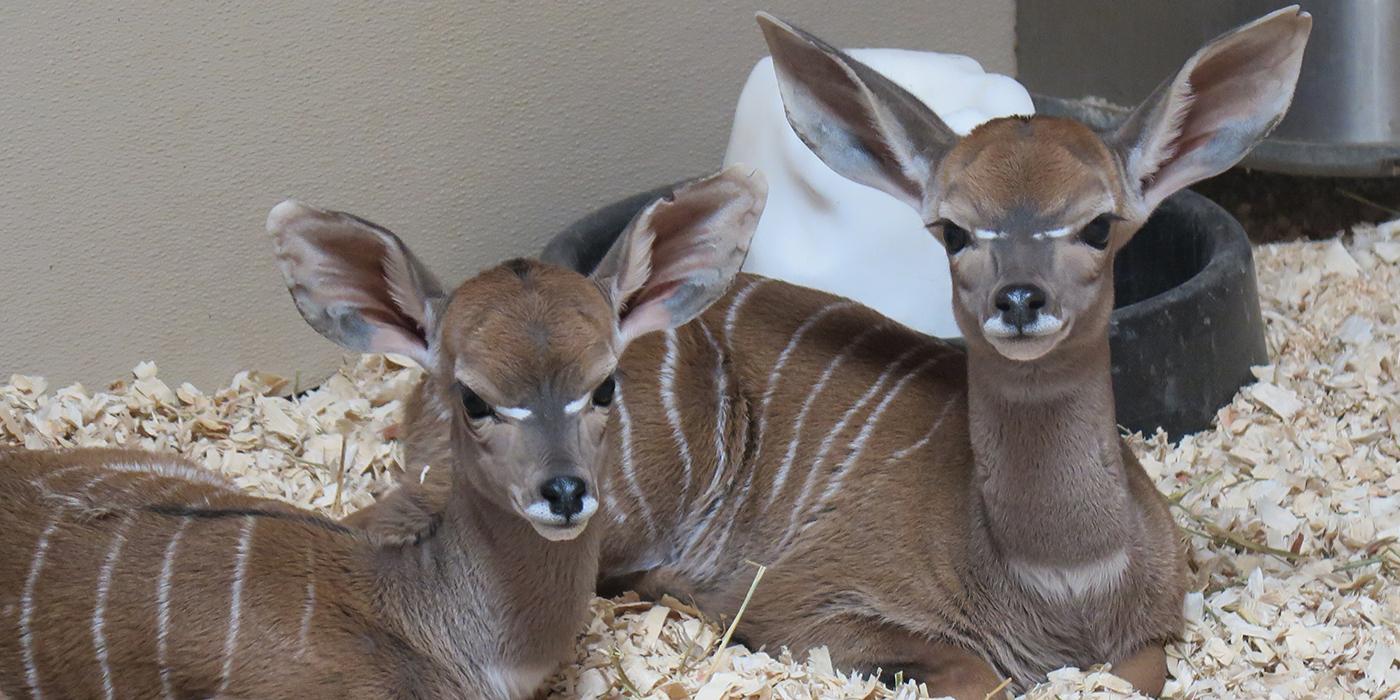Keeping Up With Kushukuru the Kudu
As his name suggests, Zoo staff are “grateful” for 5-month-old male lesser kudu, Kushukuru! He was born Jan. 12, 2019, to 5-year-old first time mother Rogue and 8-year-old father Garrett. Cheetah Conservation Station keeper Deb Grupenhoff and assistant curator Gil Myers share the latest updates on the Zoo’s new kudu.
How does Kushukuru typically spend his day?
Grupenhoff: Kudu are a shy species and spend the majority of the day hiding in the bushes. They are most active at dusk and dawn, and during that time they devour the leaves on the trees. Females Rogue and Shirley are much more skittish and shy — they tend to stay hidden. Garrett, Kushukuru’s father, is more outgoing, and tends to stand at the center of the exhibit. It looks as though his son inherited that boldness, as we see him in the open areas of the exhibit often.
Myers: The Cheetah Conservation Station team has been spending time in the exhibit offering leaf eater biscuits to build Kushukuru’s confidence when keepers are present. So far, it has been working well and Kushu will venture out of the security of the bushes and stand within about 10 feet of us for his treats.
Is Kushukuru still nursing? Has he tried any new foods?
Grupenhoff: Yes, he is still nursing, but he will likely wean by the time he turns 8 months old. Less than a month after he was born, he started nibbling some hay and feed.
Myers: Since Kushukuru is Rogue’s first calf, she will likely allow him to nurse longer than he needs. Time will tell. He is already eating alfalfa, pellets and browse.
Does Kushukuru have a favorite enrichment item?
Grupenhoff: Because the kudu exhibit is full of bushes, trees and other plants to explore, most of the kudu’s enrichment items tend to be food-based, including biscuits (used in training sessions) and browse — their favorite being willow and mulberry branches.
One of Garrett’s favorite pastimes is sparring with the deadfall in the exhibit. I am sure Kushukuru will do the same when he is older!
Does Kushukuru get along with Karl?
Myers: Our strategy was to wait until Kushukuru was around 2 months old before we introduced him to Karl, our Abyssinian ground hornbill. At that age, we felt comfortable his size and strength was enough to move away quickly or defend himself.
Grupenhoff: Luckily, the introductions went very smoothly. There was more curiosity than fear or aggression. His mom and aunt are much more cautious, and would dip their heads at Karl if they thought he came too close to the calf.
Kushukuru will walk up to Karl, but Karl will walk away if he feels the calf is getting too close. In fact, Karl seems to be more interested in looking for bugs and other critters in the yard than he is with the calf — he is just doing his own thing. It will be interesting to see if the relationship changes as Kushukuru becomes more bold and independent.
Have you started training sessions?
Grupenhoff: I would love to work on positive reinforcement training with this calf. His dad, Garrett, is a pro at standing still (called “stationing”) and allowing me to lift up his feet and give his hooves a quick trim. This training also enables me to get a good look at his overall body condition and check for any cuts or scrapes that need addressing by our veterinary team. This training works with Garrett because of his calm temperament. Still, it took a lot of patience and trust on both our parts to get this going as a routine procedure.
I am hoping Kushukuru takes after his dad in that regard! Typically, training with this calf would begin once he turns 1 year old. However, that is the age when they become sexually mature; we would have to separate Kushukuru from his mom and aunt. If we do not receive a breeding recommendation from the Species Survival Plan and we are able to keep him into adulthood, I very much look forward to training this sweet little guy.
Are there any big milestones coming up?
Grupenhoff: As they approach their first birthday, male lesser kudu calves begin to sprout their horn buds — the beginnings of those awesome, 3.5-foot-long spiral horns!
What are your favorite facts about Kudu?
Grupenhoff: Their shy temperaments make their personalities very endearing. As a keeper, there is no better feeling when a shy animal walks towards you — it means you have built a trusting relationship with them.
This story appears in the July 2019 issue of National Zoo News. See Kushukuru at Cheetah Conservation Station!
Related Species:




